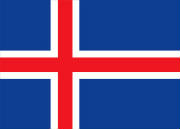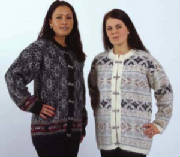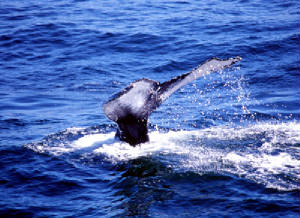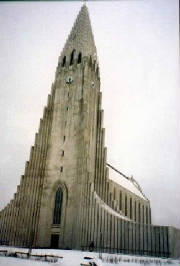|
As I write this, I have been in Iceland about a week, and I can attest to the true reason they call it Iceland. It doesn't
just snow in the winter here. About once a week, the temperature rises just enough to rain - then it drops again. Therefore,
the entire island is covered with a layer of ice a few inches thick, covered with several inches of snow. Tonight, the wind
has kicked up to about forty or fifty miles and hour (with snow) so I am hinding inside. I'm not cold, though, because the
Icelandic people know how to heat a hotel room!
I have a nice room, with a little kitchenette, so I can make most of my own food. The Officer's Club has a buffet everyday,
so I've eaten there a couple of times. There's good fish here, and everyplace in this country has good coffee. There's free
coffee in almost every building I've been in.
I'm working nights, so I actually wake up the same time I do in the States (go figure). At least that means I can see
most of the football games.
As soon as I can get my camera, I'll put up pictures.
We had our first blizzard this week. The weather systems here move so fast, that the storms seem to only last a couple of
hours, but they drop as much snow as they can during that time.
I thought all of the trivial facts on Iceland were interesting, but I didn't want to right them all out properly. I decided,
therefore, to write them as brief bullet points. (Unless otherwise noted, all facts come from Insight Guides; Iceland, published
by APA Publications (The Discovery Channel).
Environment
* On Average, Iceland has a volcanic eruption every five years.
* One Third of all lava erupted in recorded history has come from Iceland.
* Many Volcanoes have glaciers inside of the crater. (These cause massive floods during eruptions, which precede the
lava, ash, and gases. In 1996, an eruption caused a massive flood, which deposited "icebergs" the size of apartment
buildings in the city. As the weather turned warm, the ice melted and caused quicksand to cover many areas.)
History
* 6th or 7th century: Irish monks became the first settlers of "Thule"
* The mid 9th century: The first Norwegian came to the island and named it Ió sland (Iceland)
* 1000 AD Christianity (Lutheran) is adopted in Iceland.
* 100 AD Leifur Eriksson discovers Vinland (America).
* 1952-1976 Iceland is at war on four different occasions with Great Britain over fishing rights. They win and are
granted 200 mile fishing limits.
* 1980 Iceland becomes the first country to democratically elect a female head of state.
Economics
* The average work week in Iceland is the longest in Europe. (46-49 Hours per week).
* Iceland has one of the lowest unemployment rates in the world (less than four percent).
* Ten percent of the population are involved in fishing - which makes up ninty percent of the GNP
People
* Icelandic women have won two Miss World titles (1985,1988)
* Icelandic actress (Bjork) has won Best Actress at Cannes
* Two Icelandic men have held "Strongest man in the World" titles four times each.
* Everyone is addressed by first names (names in the phone book are even listed first name first). The only titles
used are those for clergy.
* Anyone can make an appointment to see the president of iceland.
* The population is 100 percent literate. One in ten Iceanders publish a book in there lifetime.
* "More books are written, published, and sold in Iceland per capita than anywhere else in the world."
The Language
* 13th Century stories equates to the oldest prose in Europe not written in latin. In other words, they were written
in the common language.
* The Sagas are still popular, because Icelanic language has not changed in a thousand years.
I have decided to try to answer questions that some people have asked since I've been here; such as, what my daily life is
like, how's the weather, and what's up with Icelandic wool.
Daily, things are pretty dull. I get up and cook breakfast in my room, then I watch TV for a few hours before work.
TV here is okay, we have all the AFN (Armed Forces Network) stations, which show a mix of U.S. programs. (ESPN Sportscenter,
network shows, movies, sports, etc) We also have several European Channels (Discovery, Animal Planet, MTV, VH1, BBC Four,
and about four Icelandic channels.) Most of the Icelandic channels show a lot of U.S. programming with Icelandic subtitles.
The European channels are all in English, but Discovery channel commercials are all in Swedish. At work I usually have a
TV dinner, or bring food I cooked earlier. After work, I usually eat again and play video games until bedtime. On weekends
I do my shopping, and read, play video games, watch movies, and sightsee. I've finished one book and got half way through
the next. I've built the Tampa Bay Buccaneers into the most dominant team in NFL history, saved my people by finding the
parts to fix our water purifier, defeated the raiders and the deathclaws, and have infiltrated the mutant base!!
The weather has been crazy. We are in the middle of a warm (40's) spell, which has melted all the snow. Of course, we
just had a Gale this week, which nearly blew us all of the island. At least now we can see what we spent two weeks tripping
over. (There's a lava field between the rooms and the parking lot, we had no idea until the snow melted.) Today was nice
enough for me to venture around on foot.
Now for the Icelandic wool...
Basically, Icelandic wool is very soft, light, waterproof wool. For more information, click on the link below.
ALSO, the pictures of the city were taken from the top of the Church.

|
| Click to find out more about Iceland |
| Click here to discover Icelandic wool |

|
| Click to learn more about whales in Iceland |

|
Easter in Iceland
A sign was put up at the shopette that listed the Easter holiday hours for the businesses on base. We quickly realized that
everything that employed primarily Icelandic locals was closed for as many as five days over the weekend. So I thought, "wow,
easter must be a pretty important holiday here." The following information I found out just before Easter about Icelandic
celebrations, so here's the scoop.
The Sunday before Easter is Palm Sunday (Palmasunnudagur). This is to celebrate the day that Jesus entered Jerusalem
and people gathered to greet him with palm leaves. The following Thursday is Sheer Day, also called Maundy Thursday (Skirdagur).
This is the day of the Last Supper, the day that Jesus washed the feet of his disciples. The word sheer originally meant
"pure" and refers (in this case) to the purification of the soul. This also became the day that one would bathe
after the sackcloth and ashes of Lent. Sheer day is celebrated much like Easter, with a special breakfast and church services.
Most businesses run on their Sunday schedule, or are closed.
The next day is Good Friday, or Long Friday (Fostudagurinn langi). This day commemorates the day that Christ spent on
the cross. The term Long Friday; therefore, refers to the feeling that suffering passes slowly. Children are traditionally
forbidden to play, and some families spank there children this day for all the sins the have committed and not been punished
for. All businesses are closed.
The name Easter is thought to derive from the name Astaroth or Astarte. This was the Sun goddess who was married to Nimrod
who was fallen from the Gods in the form of an egg. (Which may be were the tradition of the Easter Egg originated.) Sun
worshippers also celebrated the birth of Astaroth in the early spring, and abstained from meat for a time before her day.
Later, eggs became part of the celebration, which were decorated after the shell was hollowed out. It wasn't until later
that boiled eggs were used and later eaten. Easter eggs were never used in Iceland until 1920. First they were egg shaped
boxes filled with treats. Later they became actual chocolate eggs. They were simply placed next to the child's bed Saturday
night. Actual eggs are hardly ever part of Icelandic Easter.
After the advent of Lent, rabbit, which is a common springtime dish in Europe, was not allowed to be eaten during that
time. This began the tradition of the Easter Bunny, which was baked out of dough and eaten instead of the real thing.
The Monday following Easter is also a holiday - the second day of Easter.
Coming soon.
| Church in Reykjavik |

|
| Click to learn about Reykjavik |
Coming soon.
coming soon.
|

